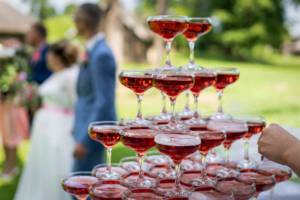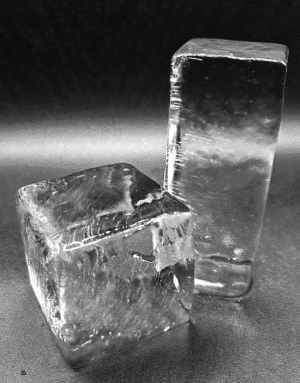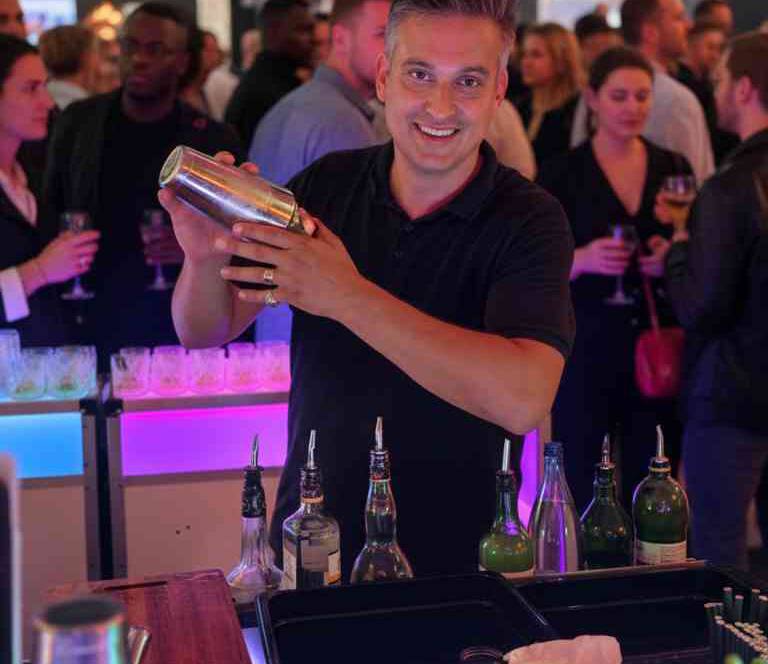Creating the Perfect Cocktail Menu for Any Event: Tailoring Drinks to Match the Occasion and Culture
Crafting a cocktail menu for an event is more than just a selection of drinks – it’s an opportunity to set the mood, complement the theme, and reflect the culture of the gathering. A well-thought-out cocktail menu can elevate any event, making it memorable for all attendees. Whether you’re planning a wedding, a corporate function, a cultural celebration, or a casual gathering, selecting the right drinks is crucial. This essay explores the art of curating a cocktail menu, taking into consideration the type of event, the cultural significance, and how to match the right drinks to the occasion.
1. Understanding the Event and Its Theme
The first step in creating a perfect cocktail menu is understanding the event itself. Each type of event comes with its own set of expectations and atmosphere, and the drinks served should complement this tone. For example, a wedding will likely require elegant, sophisticated cocktails, while a birthday party might call for fun, light-hearted drinks. Corporate events tend to favor classic, simple cocktails that don’t overwhelm guests, while music festivals or casual gatherings can embrace more daring and innovative options.

For Formal Events:
For weddings, gala dinners, or high-end corporate events, cocktails should be refined and sophisticated. Classic cocktails like Martinis, Old Fashioneds, or Manhattans are timeless choices that convey elegance. These drinks can be tailored with unique garnishes or infusions to give them a signature touch, but they should maintain a level of class that suits the formal atmosphere.
For Casual Gatherings:
For a laid-back gathering, like a summer barbecue or a casual birthday party, the cocktail menu can be more experimental. Refreshing, light cocktails such as Mojitos, Margaritas, or spritzers, served in vibrant glasses, can match the energy of the event. Bold choices, such as flavored punches or tropical cocktails, can introduce a playful and adventurous element to the experience.

For Themed Events:
For themed parties, the cocktail menu should align with the theme of the event. For a 1920s Great Gatsby-inspired party, Prohibition-era cocktails like Gin Rickeys, Sidecars, and French 75s can evoke the spirit of the time. If the event is tied to a specific season or holiday, such as a fall harvest or winter celebration, the menu should feature seasonal ingredients like pumpkin, apple cider, or cinnamon, which naturally evoke the essence of the time of year.
2. Incorporating Cultural Elements
One of the most exciting aspects of creating a cocktail menu is tailoring the drinks to reflect the cultural identity of the event or its hosts. Cocktails can be an incredible way to express the cultural richness of an occasion, especially when the event celebrates specific traditions or heritage.
For International and Cultural Events:
If you are curating a menu for a cultural event, it’s important to consider the ingredients and flavors that are emblematic of that culture. For example, if the event celebrates Mexican culture, a menu featuring Tequila-based drinks like Margaritas, Palomas, or Tequila Sunrises would feel authentic. To celebrate Italian culture, classic drinks like Negronis, Aperol Spritz, and Bellinis would be fitting.
For an Asian-inspired event, cocktails made with sake, soju, or rum can reflect the diverse drinking traditions of the region. You might create drinks like a Lychee Martini, a Matcha Mojito, or a Ginger Lemongrass Mule.
Cultural Significance in Ingredients:
It’s also important to consider the ingredients and how they align with the event’s cultural significance. For example, a Middle Eastern event could feature drinks with pomegranate, rosewater, or honey, reflecting the region’s vibrant flavors. Similarly, drinks made with tropical fruits like coconut, pineapple, and mango would be perfect for a Caribbean or South Pacific-themed event.
For a more global approach, you might combine elements from different cultures to create fusion cocktails, while maintaining respect for the origin of the ingredients. These cocktails can introduce guests to new flavors while celebrating the cultural diversity of the event.
3. Balancing the Cocktail Selection
A successful cocktail menu should be well-balanced, offering a variety of drinks that cater to different tastes and preferences. It’s essential to include a selection of both alcoholic and non-alcoholic drinks, as not all guests will want to consume alcohol. Offering mocktails ensures that those who are abstaining from alcohol or prefer lighter beverages can still enjoy a refreshing and flavorful drink.
Including Signature Cocktails:
Another way to make the event stand out is by creating a signature cocktail. This could be a unique drink created specifically for the event, which reflects the event’s theme or the personalities of the hosts. Signature cocktails can be a fantastic conversation starter and offer a personal touch that guests will remember long after the event has ended.
For example, a wedding may have a signature drink that reflects the couple’s tastes or relationship. A corporate event might create a cocktail that includes ingredients that reflect the company’s brand or values. These signature drinks can become a memorable part of the event’s identity.
Providing Variety:
A balanced cocktail menu should feature a mix of classic options, experimental drinks, and seasonal specialties. Offering a range of drinks that includes light and refreshing, bold and robust, and sweet and tangy choices ensures that every guest can find something they enjoy. Consider including drinks that cater to various preferences: some guests might prefer a whiskey-based cocktail, while others might prefer gin or rum. It’s also essential to include options for guests who may not enjoy hard liquor, such as wine-based cocktails, sangrias, or sparkling beverages.
4. The Importance of Presentation
The way a cocktail is presented can elevate the entire drinking experience. Glassware, garnishes, and even the way drinks are served – whether shaken or stirred – all play an important role in how the drink is perceived. For high-end events, glassware should be elegant and stylish. For casual events, colorful and fun glasses can enhance the laid-back vibe.
Garnishes should complement the flavors of the drink and be aesthetically pleasing. A slice of citrus, a sprig of mint, or an edible flower can make a drink not only more flavorful but visually striking. Creative and thematic garnishes can further highlight the event’s theme, like a miniature umbrella for a tropical party or a rim of sugar for a holiday event.
5. Conclusion: Tailoring the Cocktail Menu to the Event
Creating the perfect cocktail menu for an event is a delicate balance of understanding the event’s atmosphere, reflecting its cultural significance, and ensuring there is a drink for everyone to enjoy. A thoughtful selection of drinks can enhance the guest experience, evoke emotions, and ensure that the event is remembered for years to come. Whether the occasion is formal or casual, local or international, the right drinks, paired with the right cultural understanding and attention to detail, will make any event a resounding success. The art of cocktail mixing lies not just in the ingredients, but in the ability to match the right drinks with the right moment, creating an unforgettable experience for all attendees.


